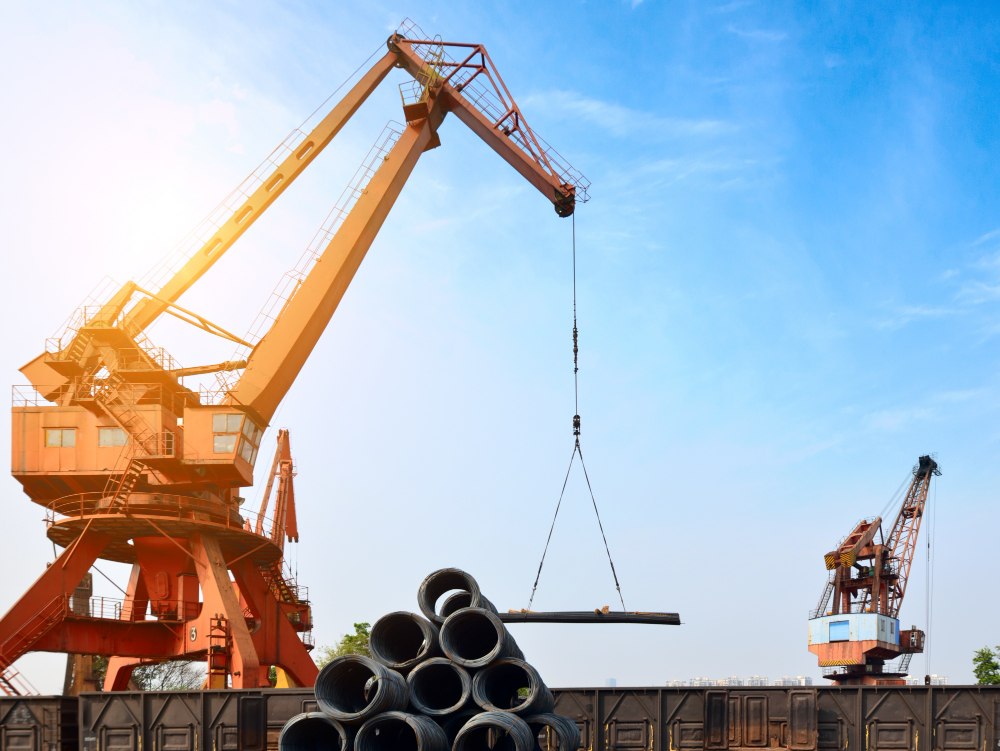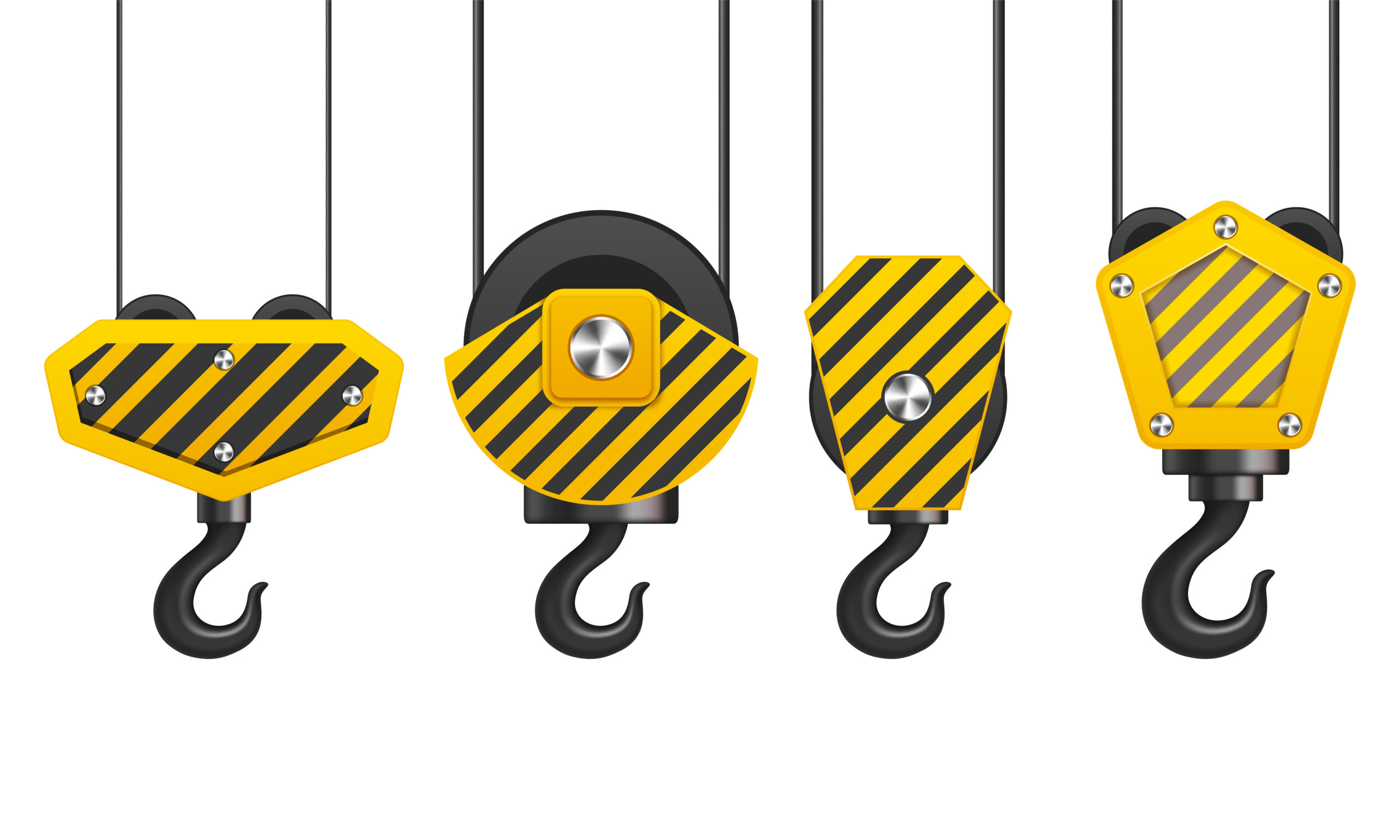Cranes and overhead cranes are supplied by specialist crane manufacturers in the UK. They are invaluable tools that enable workers to easily lift & transport heavy loads without strain, helping reduce damage rates and avoid employee fatigue.
In this article we will be discussing three types of these cranes and why you need them in your next construction project.
Contrary to forklifts, these devices can lift heavier and larger items more safely and provide greater flexibility than their counterparts – so they can cover more areas within your facility than just forklifts alone.

Bridge Crane
As long as it involves moving large loads overhead using an electric hoist and trolley travel along runways, a bridge crane has you covered. Available with either single-girder or double-girder bridge configurations to meet any capacity needs, these material handling devices provide convenient material handling solutions that move loads efficiently overhead.
The trolley features a hook connected to a hoist that allows for precise control and positioning of loads. A control system offers flexible control options including radio console, pendant controls and cabin attached controls – with variable frequency drives helping precisely position loads.
Bridge cranes offer another benefit in the form of their adaptability: they can be equipped with various below-the-hook lifting tools, such as spreader bars, c-hooks and custom lifters which can be changed out as required for each operation.
Bridge cranes can also be fitted with safety features to reduce the risk of accidents. This includes alarms that alert users of potential dangers like an overload condition. You could even add an anti-collision device that prevents accidental collision with other bridges or forklifts in their bay.
Other important features to keep in mind when selecting a bridge crane are its load capacity, span, end trucks, bridge drive and hoist motor.
Gantry Crane
The gantry crane is the most commonly-used overhead crane type supplied by crane manufacturers. As a versatile solution for many facilities and uses, they’re especially beneficial when moving materials in different ways – ideal for assembling parts, loading shipping containers and transporting materials throughout a facility or warehouse.
Power cranes can also be a valuable addition to construction sites and steel mills, offering heavy lifting capability while transporting machinery. Furthermore, these powerful vehicles can even assist with the assembly of automotive engines and vehicle components in manufacturing plants.
Gantry crane components include girders, runway rails, end trucks and a drive system that supports its hoist or trolley. An operator sits in a cab to control operations of the crane which may be powered by hydraulic, induction AC or servo motors and has either chain or wire rope as its hoist; its reeving determines how much weight can be lifted which in turn determines capacity, headroom and running speed.
Safety-wise, any gantry crane should feature limit switches, emergency stop buttons, and load indicators for optimal functionality. Limit switches are manually or automatically operated electric switches which cut power independently of the control console; emergency stop buttons can be set off by reaching their end of travel or contact with other equipment, while load indicators display the weight of their load.
Other features found on a crane include the Stow Pin Assembly and Stow Winch. The Stow Pin Assembly comprises one steel arm dropped from each wheel set into a Stow Pin Assembly that prevents lateral movement of wheels on runway rails; these should be in place during hurricanes or other emergencies where stopping quickly is necessary. Furthermore, hooking your Stow Winch to its Stow Pin provides another level of safety when loading or unloading containers.
Workstation Crane
Workstation cranes differ from bridge and gantry cranes by being designed specifically to support lighter loads; instead they’re intended for repetitive lifting tasks performed in smaller work areas with less weight to lift. Workstation cranes are an effective way of reducing worker fatigue while simultaneously increasing productivity, quality of work and facility efficiency – they come in different sizes and designs without needing existing supports for installation.
As with the other types of overhead cranes, workstation cranes can be powered through conductor bars, festoon system or cable reels or combinations of these systems. The energy from these sources provides energy to operate the runway and bridge crane controls as well as hoist and trolley, typically electrically powered although pneumatic solutions may also exist.
Workstation cranes utilise either single or double beam components that move along similar to barn door tracks across runways that resemble barn door tracks. These runways may be located on columns attached to buildings’ frames and trusses or freestanding columns structures and feature an electric trolley connecting to a bridge and moving along each runway for side-to-side and vertical load movement.
Utilising a workstation crane to lift, transport and position heavy or bulky materials eliminates manual lifting while helping reduce back strain for employees. The device can be manually maneuverer by workers, or powered via end truck or trolley for easier transportation of heavier loads while increasing ergonomics and productivity at workstations.
This type of crane can be applied in many settings, from construction sites and steel mills to transportation and distribution facilities and food processing plants. Furthermore, they may also be useful in maintenance garages with tight spaces where forklifts cannot navigate easily as well as manufacturing/warehousing operations to transport materials between job stations.
Clearance Requirements for Overhead Cranes
The purchase of an overhead crane can be a substantial financial investment, but finding the ideal system for your facility can save money in the long run by increasing production efficiency and worker safety. Unfortunately, obtaining an accurate quote can seem complicated; this article offers key insight into what goes into an overhead crane quote calculation process.
An experienced crane professional will start by inspecting the building columns and floor seams at your intended installation site, looking closely at seam locations and overall width, as well as whether they are straight or tapered columns and whether floor seams are centred within each column or wrapped around like diamond seams around each one.
They will assess whether there are any obstructions that would prevent the installation of an overhead crane at your facility. They’ll take note of your layout to assess any other limitations that could hinder installation, such as small overhead doors that would make bringing beams and components for the crane difficult. They will work with you to develop alternative solutions if this proves the case.
Next, the crane expert will assess your facility for structural support. Certain systems, like ceiling-mounted bridge cranes, may not be feasible without additional assistance from roof beams and trusses; therefore, they will discuss options that might work to accommodate your project, such as mast-style jib cranes or gantry systems.
Crane professionals will then review OSHA standards to make sure your system satisfies them all. For instance, they’ll check that the rated load of your crane is clearly marked on its hoist or load block and test its trip setting and limit switches to ensure they can be safely tripped under all circumstances.
Final checks to ensure compliance with OSHA regulations include conducting an in-depth inspection of the system and grounding all wires, cables, and electrical components accordingly.
OSHA requires that there is a minimum clearance distance between an overhead power line and any equipment or material that may come into contact with it. This distance can be calculated by adding the maximum reach of your crane to any relevant OSHA standard; for instance, if your 100′ boom has to be placed 110 feet from any power lines, this should be the minimum distance required by OSHA standards.
Staying abreast of current standards can be challenging, and deciphering them accurately is even more so. Therefore, when updating or introducing new procedures, it is wise to consult a crane and rigging professional; they will help identify whether your current equipment requires upgrading and can offer detailed quotes tailored specifically to the details of your project.
